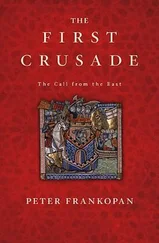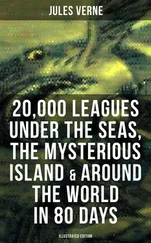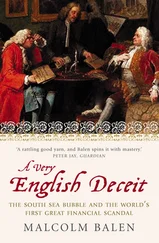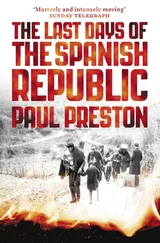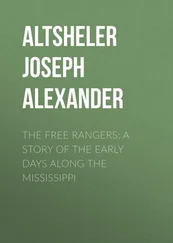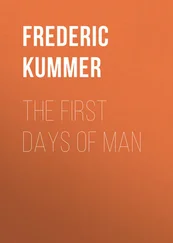Of the photos taken in Berlin-Mitte after the fall of the Wall most are of the streets, very few of the clubs and bars. Even when it wasn’t expressly forbidden, as at Ständige Vertretung and many other clubs, it was decidedly uncool to take photos. It wasn’t permitted because it is impossible to observe and take part at the same time. Walk around a club with a camera and you’re like a tourist filming your own encounters. Anyone who slides a lens between themselves and the world doesn’t trust their own experience. They forego the here and now in the attempt to capture a transient sensation and are immediately a nuisance to everyone else. People who abandon themselves to the DJ, the music, the beat, are revelling in the loss of control and don’t appreciate being photographed in that state.
‘If someone came in to take some exotic photos, we’d tell them to stop’, Christoph Keller recalls. He worked the bar at the Friseur and has documented urban space in film and photographs. ‘We were conscious of it being something special. We wanted to avoid any commodification of the situation. It was something we created lovingly and quite deliberately to counter that type of exploitation. It was a space for tasting freedom where there was this form of temporary protection. That was also why people put so much energy into it, without really being paid for their efforts. Friends were allowed to take photos, but we didn’t like anyone doing it too openly. It would’ve destroyed the foundations of everything we’d built up. Some people tried to bring in video cameras, preferably with a lamp on top, but we kicked them out. It breeds alienation and ruins the atmosphere. Everyone was clear that we couldn’t let it happen.’
Due to many people’s aversion or simple indifference to documenting what was happening, the Berlin of those years immediately after the fall of the Wall has vanished almost without a trace. Most of the places where the old Berlin was still palpable and the new Berlin in its infancy are no longer there. There comes a point when so many tiny changes to the fabric of the city have accumulated that the essential details of the past are lost and can’t be stitched back together again. The real-estate market and urban planning decisions altered the buildings, the streets and the empty plots of Mitte beyond recognition.
A lively art scene and an unbridled and all-embracing party culture emerged in Mitte in the years after the Wende – the ‘turning point’ around the fall of the Wall and reunification. Yet the city where this all happened now seems to have disappeared. Berlin has clothed itself in the myth of a young, tearaway city, while the substance of this profitable reputation has been gently hollowed out. Those anarchic years have become a selling point in the global competition for tourists, investors and businesses. New buildings have been erected on the vacant plots. The city centre has long since ceased to be the preserve of the squatters, ravers and artists who revived it after the fall of the Wall. The clubs have moved elsewhere, and most are now purveyors of professional entertainment. The early nineties seem like a dream you can only vaguely remember the next morning while the soundscape still echoes in your ear. The sound of the Wende encompasses not only breakbeat, house and techno but pneumatic drills and rubble chutes, the compressed scales of modems turning data into notes, nightingales singing at the best time for going out and the sound of a lark in the morning, as well as conversations on the edge of the dance floor, at gallery previews and in bars.
The man who sat by the kiosk outside Tacheles
Klaus was dead, and the kiosk was gone. Day after day he had watched over the Oranienburger Tor. He would sit there in his lumberjack shirt on his camping chair next to the kiosk, books laid out on the little table behind him, waving to people walking past and engaging them in long conversation. Now, one chill December day in 2005, there was a cardboard sign leaning against the side of the kiosk with his photo and the words Klaus is dead on it. Someone had placed candles and flowers in front of the sign. Alongside them were offerings of bottles of beer and vodka to accompany him on his journey into the realm of the dead.
A little while after Klaus Fahnert died, the kiosk vanished too – it’s visible next to the advertising column on 1950s black-and-white photos – and also the nearby snack stand. The small triangular space on the corner of Linienstrasse and Oranienburger Strasse where Klaus spent his days has been recobbled. It has looked clean and tidy ever since, as if this were a typical West German town grown fat on prosperous decades. Klaus lived in Mitte for fifteen years, for nearly ten of which he was to be found sitting next to Serdar Yildirim’s kiosk, diagonally across the road from Tacheles.
Serdar Yildirim is a small, wiry man with dark shoulder-length hair. It took me a while to track down the former leaseholder of the old kiosk at Oranienburger Tor, though he wasn’t far away. After much enquiring, the friendliest vendor at Dada Falafel told me that the people from the kiosk had moved to the other side of the street. Serdar has set up shop in a repurposed shipping container next to Tacheles and sells articles such as postcards and T-shirts to tourists. He generally works nights. Serdar had known Klaus since late 1996.
‘Klaus was fit as a flea back then’, he says. ‘He walked up, stopped in front of the kiosk and asked for a beer. He told me he was married, had children and loved this part of town. That’s how we met. Then he started coming every day and one day he asked if he could sit next to the kiosk and sell a few books. I said, I don’t mind. If it doesn’t bother the wardens, it doesn’t bother me. He originally came from Bonn and whenever he saw the letters BN on a numberplate, he’d say, “That stands for Berlin Next.” Daytimes aren’t very busy in summer, not many customers, so I’d often sit down with him for a chat’, Serdar says, lighting another cigarette.
By the time Klaus claimed his patch at Oranienburger Tor, Berliners and tourists in the know had long since moved on to other parts of the city to party. Tacheles was just a pesky hangover. The walls of the staircase were sprayed with coat after coat of graffiti, one on top of the other, tags stretching back to the palaeolithic era of the Berlin Republic, the first days and weeks after the fall of the Wall. It stank of beer and urine. Hawkers sold handicrafts on the first floor, and young Italians, Spaniards and Swedes sat in Café Zapata, trying to feel how Berlin must once have felt. For people from the neighbourhood, Klaus was part of the local furniture, whereas for most of the passers-by on their way to the underground station he was presumably just another dosser, lounging around in his camping chair in broad daylight next to a table of books. Klaus was a good fit with Tacheles, which had become one of new Berlin’s international tourist landmarks along with the Television Tower.
Approaching from the east, the party wall of Tacheles is visible from a long way off. It is painted with a large, vague likeness of a woman’s face, and above it is a question: ‘How long is now?’ Is the present a mathematically nonexpansible point in the stream of time that divides the past from the future, or is it more than that? The tourists you see ambling along Oranienburger Strasse have time for now. They wander around taking photos, clearly fascinated by Kunsthaus Tacheles. It’s a bit messy but colourful, slightly dilapidated yet alive. Which is what people all over the world imagine Berlin to be like.
How long is now? It’s a question that sums up handily the spirit of the Wende, the tumultuous years before and after the East German revolution, the sense of a new departure laden with immense possibilities. Now is always. Life is in the present. Tourists intuitively grasp that. However, when they stand gazing at Tacheles and the large piece of empty land around the building, they see more than that. An old wound is being kept open here. Entering East Berlin from the West in 1989, you felt yourself catapulted back into the immediate post-war years; you were moving through an open-air museum. Nothing had been buried, everything lay uncovered. You could engage in archaeology simply by walking around.
Читать дальше

